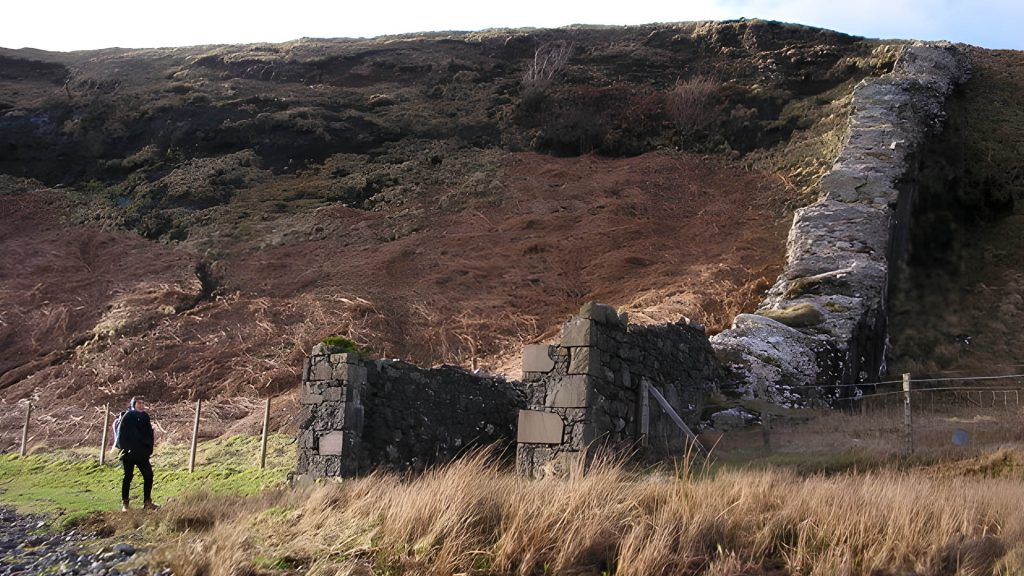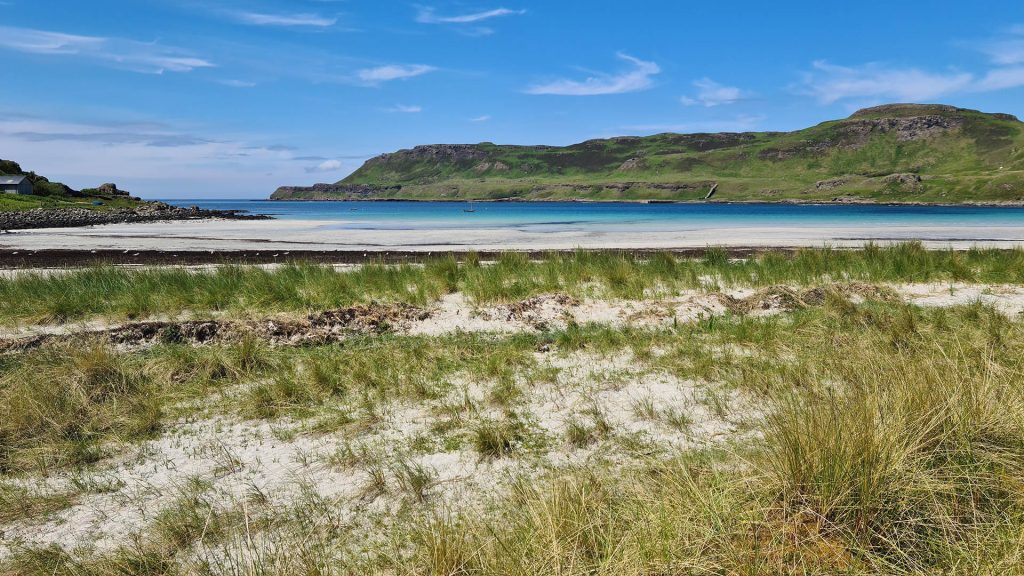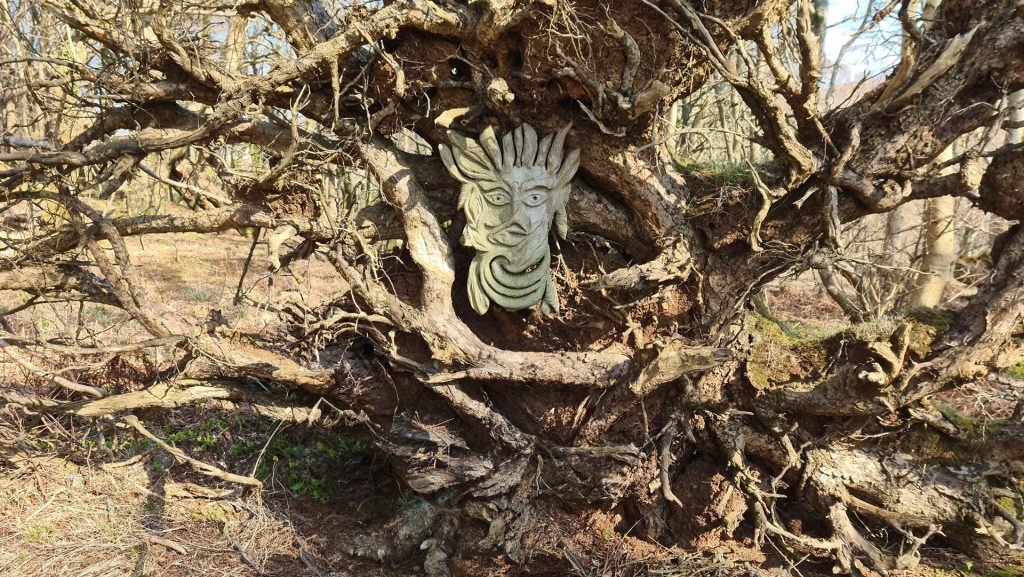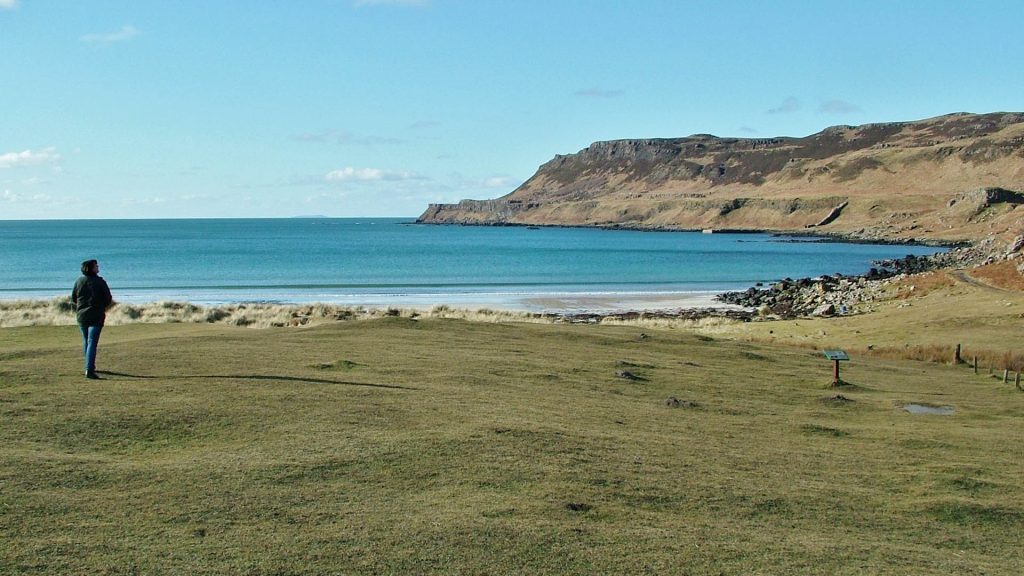Calgary Beach, also called Calgary Bay, is the Isle of Mull’s premier shell-sand shore. Five miles west of Dervaig, it unfolds across a sheltered bay backed by rare machair grasslands, offering both geological intrigue and ecological richness.
Geological & Geomorphological Features
Calgary Beach rests upon a raised wave-cut platform created by post-glacial rebound. As ancient ice sheets melted, land rose and exposed bedrock terraces beneath a veneer of fine white shell-sand. That sand, formed from crushed marine shells and tiny faunal fragments, gives the beach its signature pale hue and velvety texture.
Calgary Bay Dyke & Geological Exposures
At the far eastern tip of the bay, near the remains of the old pier, an exposed Palaeogene dolerite intrusion, locally known as the Calgary Bay Dyke cuts NW–SE across the shore platform. This 60-million-year-old dyke formed during the early North Atlantic volcanic episode and is one of Mull’s finest exposures. Part of it was even incorporated as a boathouse wall on the derelict jetty.
Access the dyke at low tide via the rocky ledge. Sturdy footwear is essential. Although on-site interpretation panels have been removed, detailed notes are available from the Mull Geology website.

Machair Habitat & Flora
The machair behind the shore thrives on calcium-rich sands, supporting a patchwork of grasses and wildflowers. Its thin soil layer stabilizes dunes and bursts into color from late spring through midsummer.
| Plant Group | Key Species | Bloom Time |
| Grasses | Festuca rubra, Elymus athericus, Anthoxanthum odoratum | May–July |
| Wildflowers | Galium verum, Lotus corniculatus, Euphrasia officinalis | June–August |
| Coastal Specialists | Plantago maritima, Armeria maritima | May–July |
| Introduced Stabiliser | Ammophila arenaria (marram grass) | N/A |
Marram grass was planted after the harsh storms of 2005 to reinforce vulnerable dune faces. By June, carpets of orchids and buttercups weave through the grass matrix, rewarding early-season visitors.

Fauna: Rabbits & Wildlife
Rabbits burrow freely across the machair, their feeding and tunneling aerating the soil while creating a dynamic habitat mosaic. You’re most likely to spot them at dawn and dusk along the dune crest.
- Oystercatchers, sanderlings, and ringed plovers foraging along the tideline.
- Sandwich terns diving offshore for small fish.
- Harbour seals hauling out on rocky skerries visible from the bay’s tip.
Historical Layers & Cultural Significance
The name Calgary derives from the Gaelic Cala Ghearraidh, meaning “Beach of the Meadow.” Key heritage sites above the shoreline include:
- Calgary Castle, built in 1817 by Captain Alan MacAskill, whose guest later named Canada’s Fort Calgary after this very bay.
- Ruins of Inevie township, cleared during the Highland Clearances of the early 1800s; over 20 abandoned croft foundations remain.
- Art in Nature Trail, a woodland walk linking the beach to Carthouse Gallery, adorned with site-specific sculptures.

Conservation & Management
Maintaining the machair’s delicate balance is crucial. Management measures include:
- Protective matting at high-traffic zones to prevent trampling.
- Designated toilet facilities at campsites only.
- Seasonal signage advising against dune-front access during nesting season (May–July).
- Marram grass reinforcement projects post-2005 to arrest erosion and preserve the sandbank.

Visitor Tips & Hidden Details
Plan your visit around wildflower and wildlife peaks:
- Late June showcases the machair’s floral diversity at full bloom.
- Dawn and dusk offer premium rabbit-watching moments; binoculars are recommended.
- Sunrise photography captures the interplay of soft pink sands and distant hills.
- Sample local crafts and refreshments at Carthouse Gallery Tearoom before exploring the Art in Nature installations.
